I'm working on a small blog engine where the user can create blog entry and possible to link tags to an entry. It is many-to-many relation, but due to that Breeze cannot yet manage this relation I have to expose the join table to breeze so that I can persist the data step-by-step. And my problem is here.
Tables:
- BlogEntry
- BlogEntryTag
- Tag
Scenario:
- user opens the "new blog entry" form or selects an existing one to be edited
- enters the text, etc
- selects one or more tags
Business logic:
- create a new entity by Breeze / query the selected one
- save the blog entry (1st server call which gives back the blog_id if the blog entry is new one)
- check the already existing connections between the tags and blog entry, if the blog entry is edited then the already existing blogEntry-tag relations might change ( 2nd server call)
- based on the tag name selecting the tag_id from tag table (3rd server call)
- create the BlogEntrytag entities by breeze
- persist the BlogEntrytag entities into database ( 4th server call)
I think the order must be consecutive.
I have this code and as you can see the attached screenshot the console logging marked by '_blogEntryEnttity' does not wait until the data returns from the server and it will be executed before the console logging marked by '_blogEntryEnttity inside'. The code will throw a reference exception when it tries to set up the title property a few line later.
var blogEntryEntityQueryPromise = datacontext.blogentry.getById(_blogsObject.id);
blogEntryEntityQueryPromise.then(function (result)
{
console.log('result', result);
_blogEntryEntity = result[0];
console.log('_blogEntryEnttity inside', _blogEntryEntity);
//if I need synchronous execution then I have to put the code here which must be executed consecutively
});
console.log('_blogEntryEnttity', _blogEntryEntity);
}
//mapping the values we got
_blogEntryEntity.title = _blogsObject.title;
_blogEntryEntity.leadWithMarkup = _blogsObject.leadWithMarkup;
_blogEntryEntity.leadWithoutMarkup = _blogsObject.leadWithoutMarkup;
_blogEntryEntity.bodyWithMarkup = _blogsObject.bodyWithMarkup;
_blogEntryEntity.bodyWithoutMarkup = _blogsObject.bodyWithoutMarkup;
console.log('_blogEntryEnttity', _blogEntryEntity);
The example comes from here.
My question is that, why it is not wait until the data comes back? What is the way of handling cases like this?
However, I figured out that, if I need synchronous execution then I should place the code into the success method following the data retrieving from the promise. However, I really don't like this solution because my code will be ugly after a while and hard to maintain.
The datacontext.blogentry.getById looks like below and the implementation is in an abstract class, you can find the code below too. The whole repository pattern comes from John Papa's course on Pluralsight.
Repository class method
function getById(id)
{
return this._getById(this.entityName, id);
}
Abstract repository class method. According to Breeze's documentation page the EntityQuery class' execute method returns a Promise.
function _getById(resource, id) {
var self = this;
var manager = self.newManager;
var Predicate = breeze.Predicate;
var p1 = new Predicate('id', '==', id);
return EntityQuery.from(resource)
.where(p1)
.using(manager).execute()
.then(success).catch(_queryFailed);
function success(data) {
return data.results;
}
}

I appreciate your help in advance!